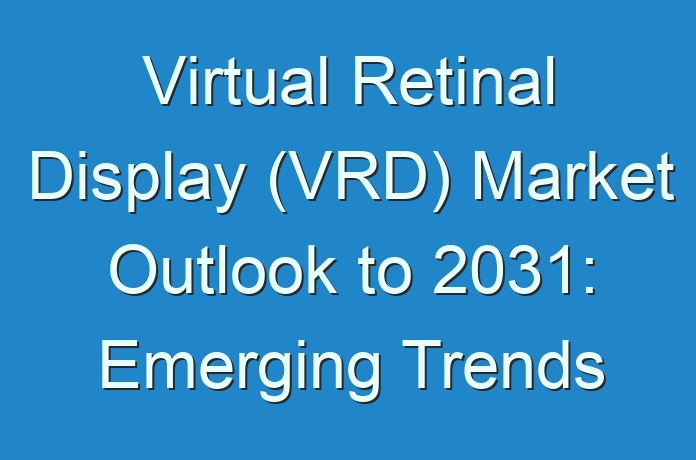
Virtual Retinal Display (VRD) Market: Introduction
- In the naive and simplified model of virtual retinal display technology, three lasers (red, green and blue, for a full-color image) scan across the retina to allow the subject to perceive an image as if its photons came from a real-life object. Usage of display technology has increased at a rapid pace in the last few decades, from the old CRT (Cathode Ray Tube) displays to the presently in demand LCD (Liquid Crystal Display) and LED (Light Emitting Diode) displays. VRD is a safe, new display technology. Power levels recorded from the system are several orders below the power levels prescribed by the American National Standard.
- VRD creates images by scanning low power laser light directly onto the retina. This special method results in images that are bright, possess high contrast, and high resolution.
- High brightness, High contrast, high resolution, low power consumption, and high brightness make VRD an ideal candidate in various applications such as medical surgical displays, military, aerospace, head mounted displays as well as help improve the sight for patients with visual disabilities. VRD is a novel idea and is ready for getting absorbed into the latest tech around the world. It quite literally provides a fresh new look of the world.
- The technology is utilized in the aerospace and defense sector. Applications are widespread in the healthcare sector as well and range from treating trauma to be used as an aid in cancer detection.
Request a Sample –
https://www.transparencymarketresearch.com/sample/sample.php?flag=S&rep_id=11825
Rise in demand owing to Augmented Reality and Virtual Reality
The need for lightweight, portable wearable devices that can provide the required data to users in real-time is driving the VRD market. Gaming, entertainment, and sports industries are witnessing an increased demand for such devices. Engineering and medical industries are also in need of such technology. VRD readily creates images that can be easily viewed in ambient room light, and it can create images that can be viewed in ambient daylight. The combination of high brightness and contrast and high resolution make VRD an ideal candidate for use in a surgical display. Furthermore, tests show strong potential for VRD to be a display technology for patients with low vision.
VRD technology is also predicted to be widely adopted for training & simulation activities, as it minimizes the need for physical set-up for training sessions and reduces costs of training by simulating the experience
North America to Hold Prominent Share of Global Market
North America to hold a notable share of the global market, as several key players are present in the region. Rapid adoption of technology in the region as presence of higher-class consumers and presence of prominent techno sport market and gaming industry further boost the market. Major players such as Google and Microsoft are also investing in prototypes, which in turn is estimated to propel the market in the region.
Followed by North America, the market in Asia Pacific is expanding at a considerable pace, as the region has a high number of developing nations, which increases the consumer base and numerous key players are investing in R&D in the region.
Buy Premium Research Report@
https://www.transparencymarketresearch.com/checkout.php?rep_id=11825<ype=S
Key Players Operating in Virtual Retinal Display (VRD) Market
Key players are currently investing in R&D, new products, and some of them instead of whole hardware are focused on only display.
Key players include:
- QD Laser Co. Ltd
- Human Interface Technology Laboratory
- Microvision
- Texas Instruments, Inc.
- Magic Leap Inc.
- OmniVision Technologies Inc.
- Himax Technologies Inc.
- Movidius Inc.
- Analogix Semiconductor Inc.
Read Latest Press Release By TMR:





